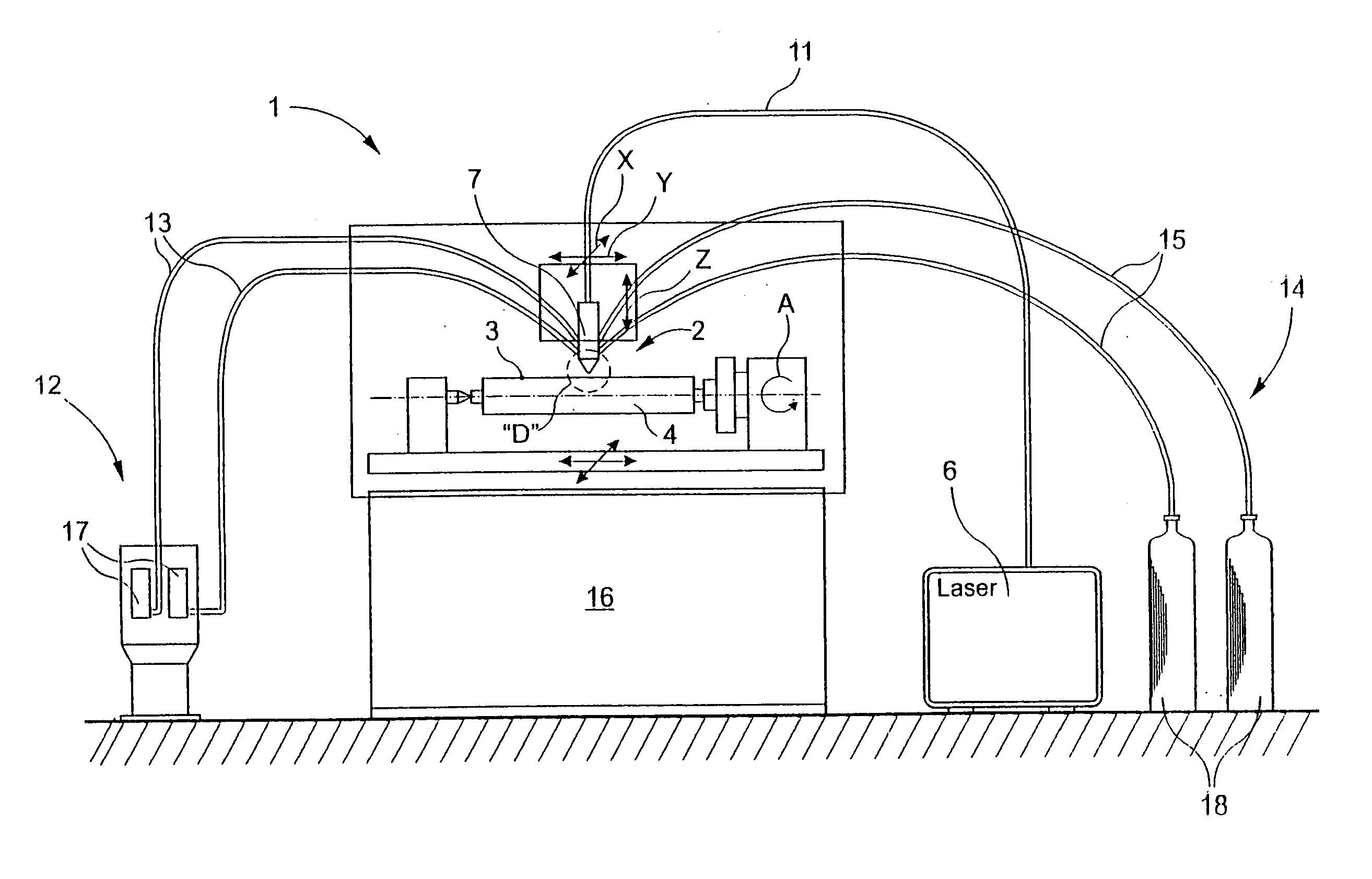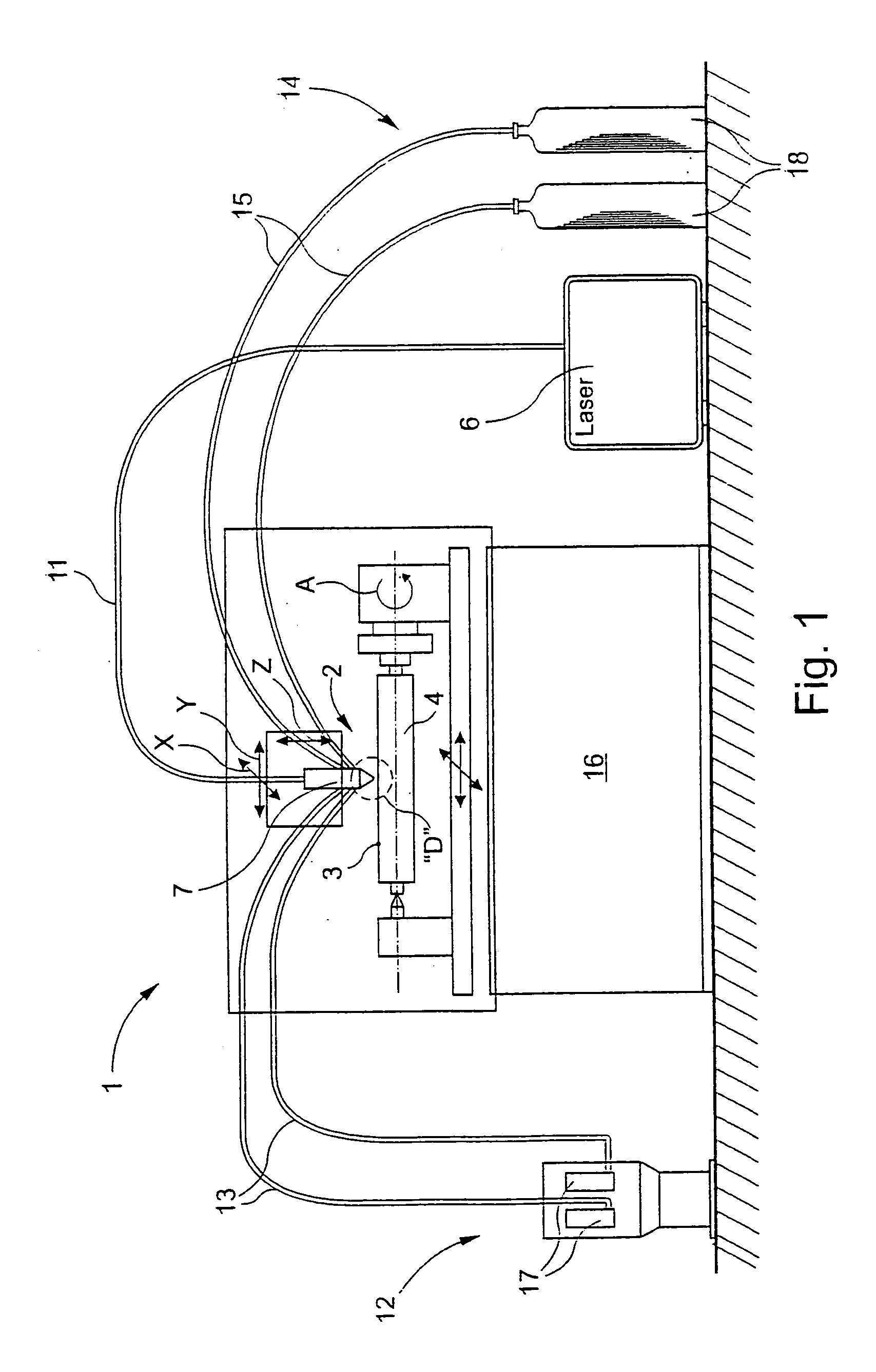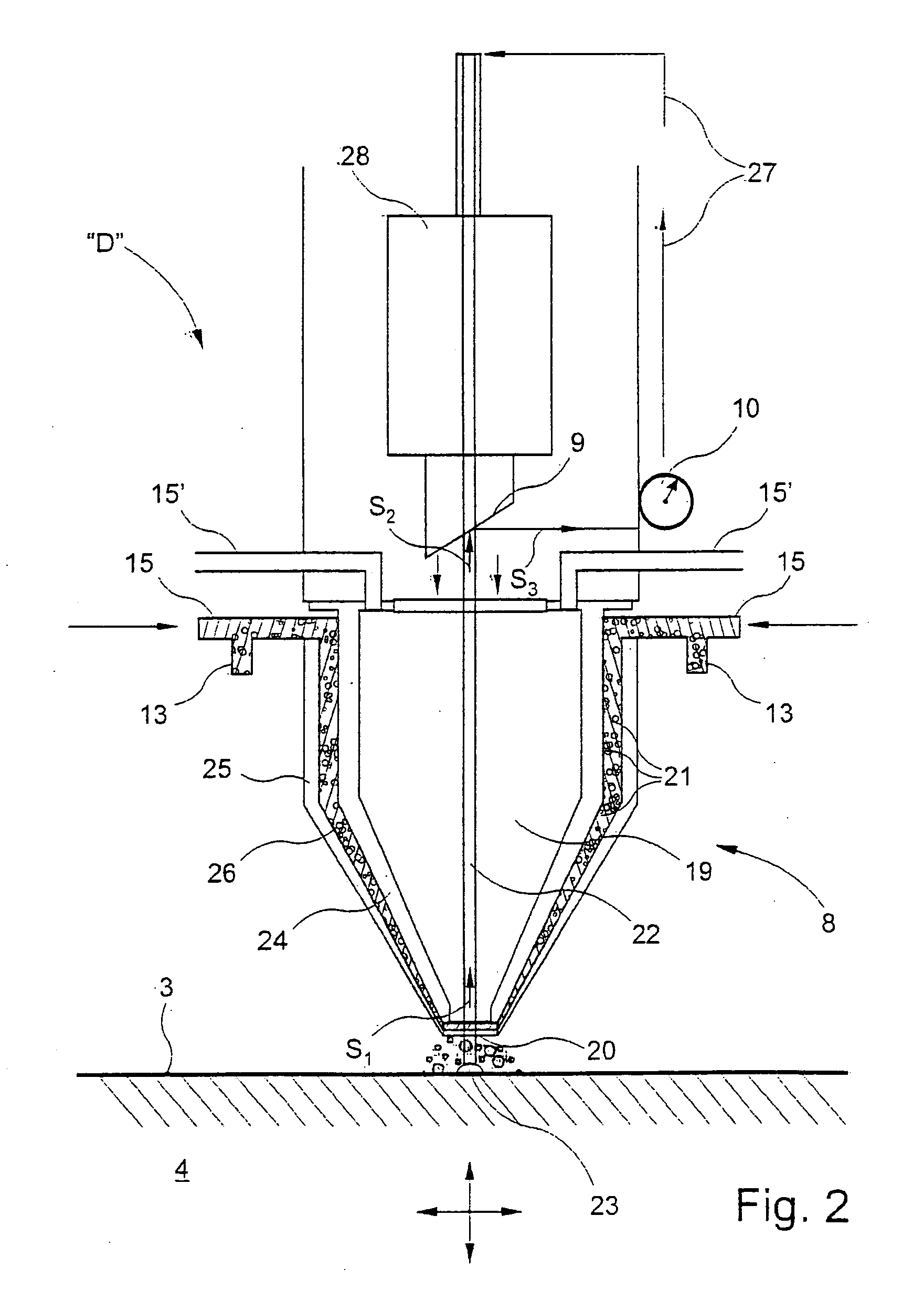Method and device for producing a cutting or embossing roller by means of laser resurfacing welding
a laser resurfacing welding and cutting or embossing technology, which is applied in welding/cutting media/materials, metal working equipment, metal-working apparatus, etc., can solve the problems of high cost of cutting roller production, large wear, and significant stress on cutting or embossing projections, and achieve the effect of increasing power
- Summary
- Abstract
- Description
- Claims
- Application Information
AI Technical Summary
Benefits of technology
Problems solved by technology
Method used
Image
Examples
Embodiment Construction
[0034] Turning now in detail to the drawings, FIG. 1 shows a device 1 for producing a cutting roller 2 having a cutting knife 5 that projects out of the surface 3 of a base body 4 of the roller. The cutting knife 5, which is also referred to as a knife blade, can be seen in FIG. 3. Cutting roller 2 is particularly used in envelope and label production machines.
[0035] Device 1 has a working head 7 that is mounted in a machine tool 16, preferably one that is computerized numerically-controlled (CNC controlled), and can be moved relative to the cylindrical base body 4 of the roller, which can be clamped in place so as to rotate about an axis of rotation A, in three spatial directions X, Y, and Z that stand perpendicular to one another, and are characterized with corresponding arrows in FIG. 1. Alternatively, working head 7 may be fixed in place, and base body 4 of the roller moved in the three spatial directions X, Y, and Z, relative to the fixed working head 7, and rotated about axis...
PUM
| Property | Measurement | Unit |
|---|---|---|
| Wavelength | aaaaa | aaaaa |
| Wavelength | aaaaa | aaaaa |
| Wavelength | aaaaa | aaaaa |
Abstract
Description
Claims
Application Information
 Login to View More
Login to View More - R&D
- Intellectual Property
- Life Sciences
- Materials
- Tech Scout
- Unparalleled Data Quality
- Higher Quality Content
- 60% Fewer Hallucinations
Browse by: Latest US Patents, China's latest patents, Technical Efficacy Thesaurus, Application Domain, Technology Topic, Popular Technical Reports.
© 2025 PatSnap. All rights reserved.Legal|Privacy policy|Modern Slavery Act Transparency Statement|Sitemap|About US| Contact US: help@patsnap.com



